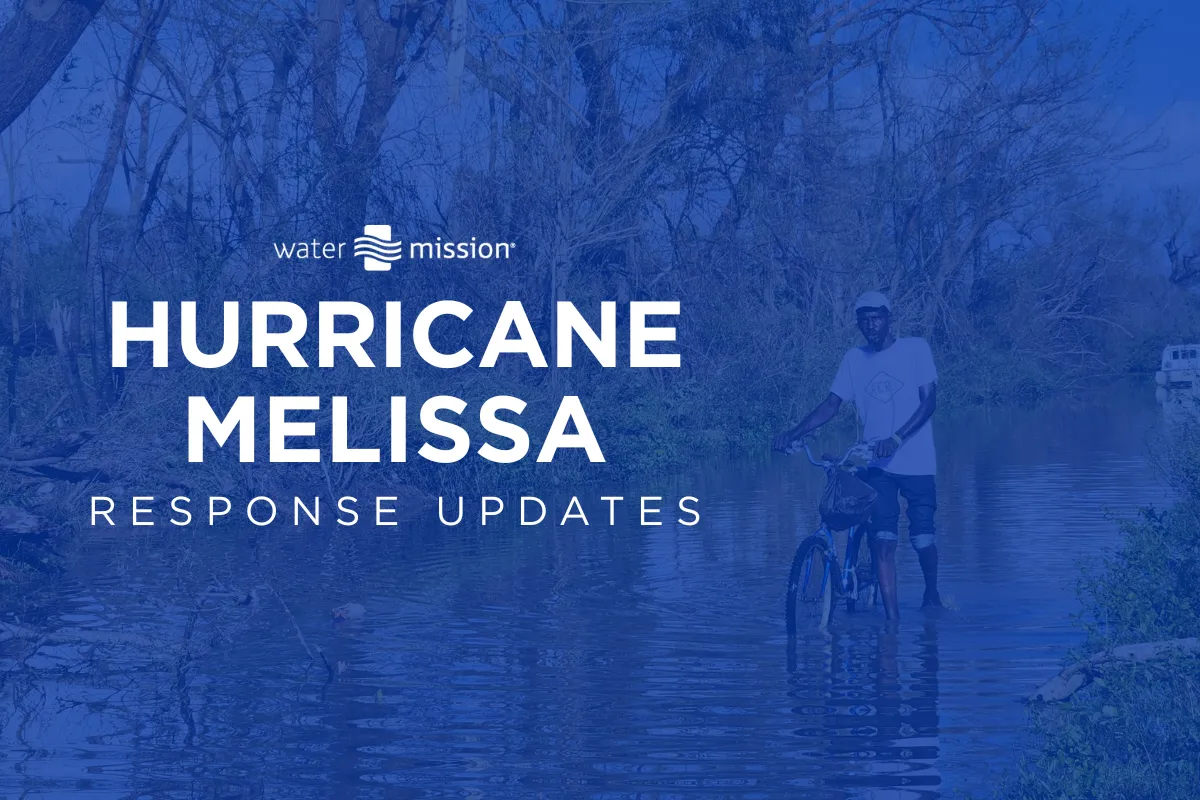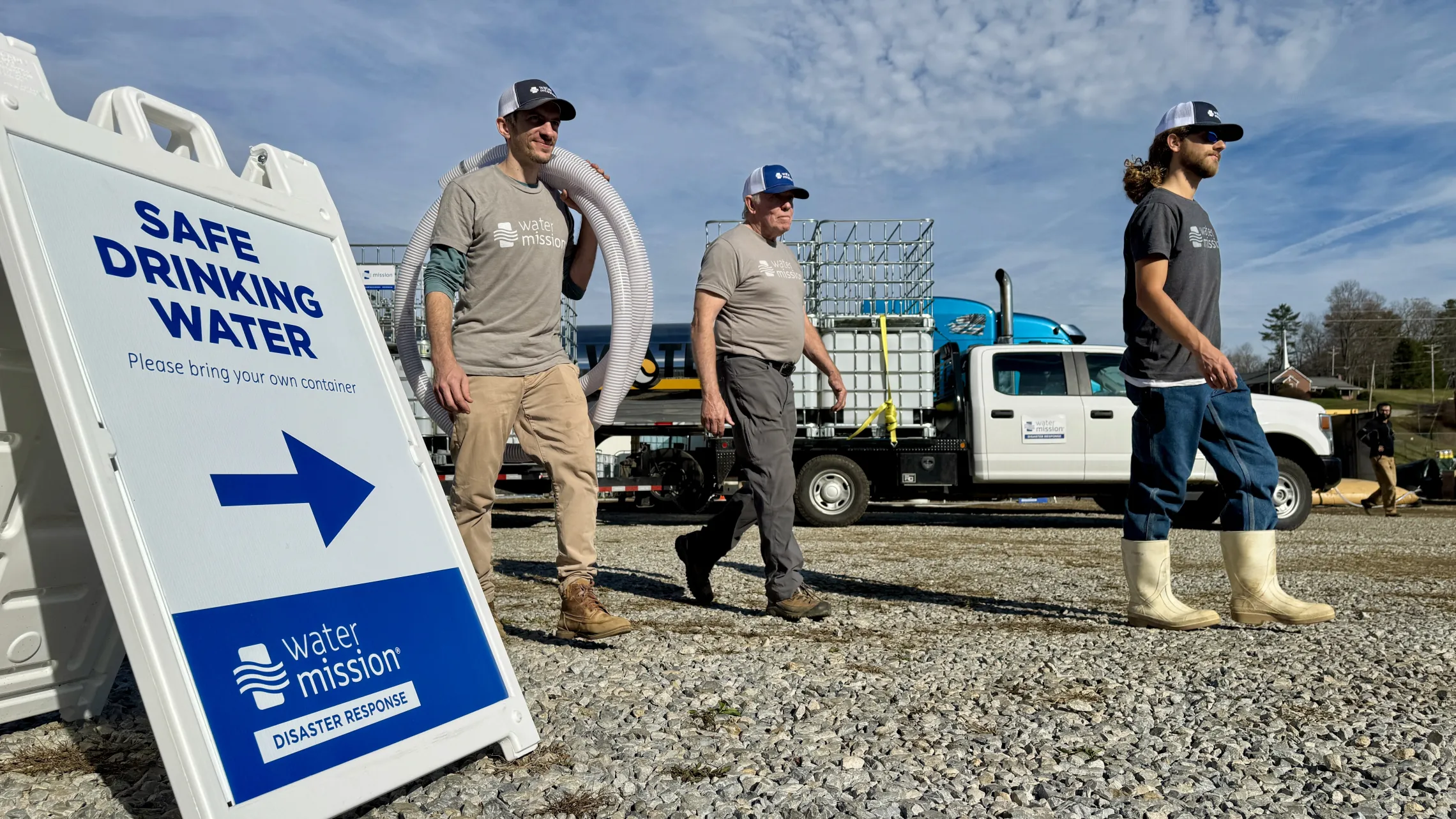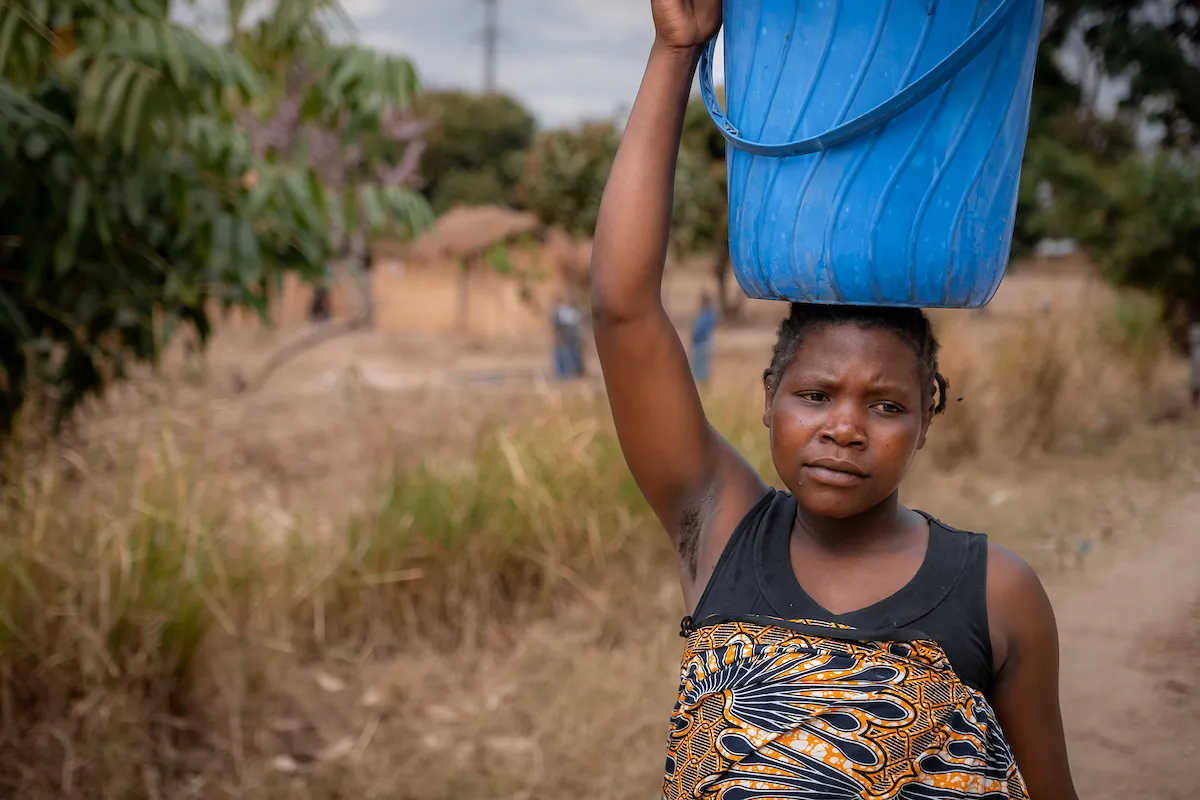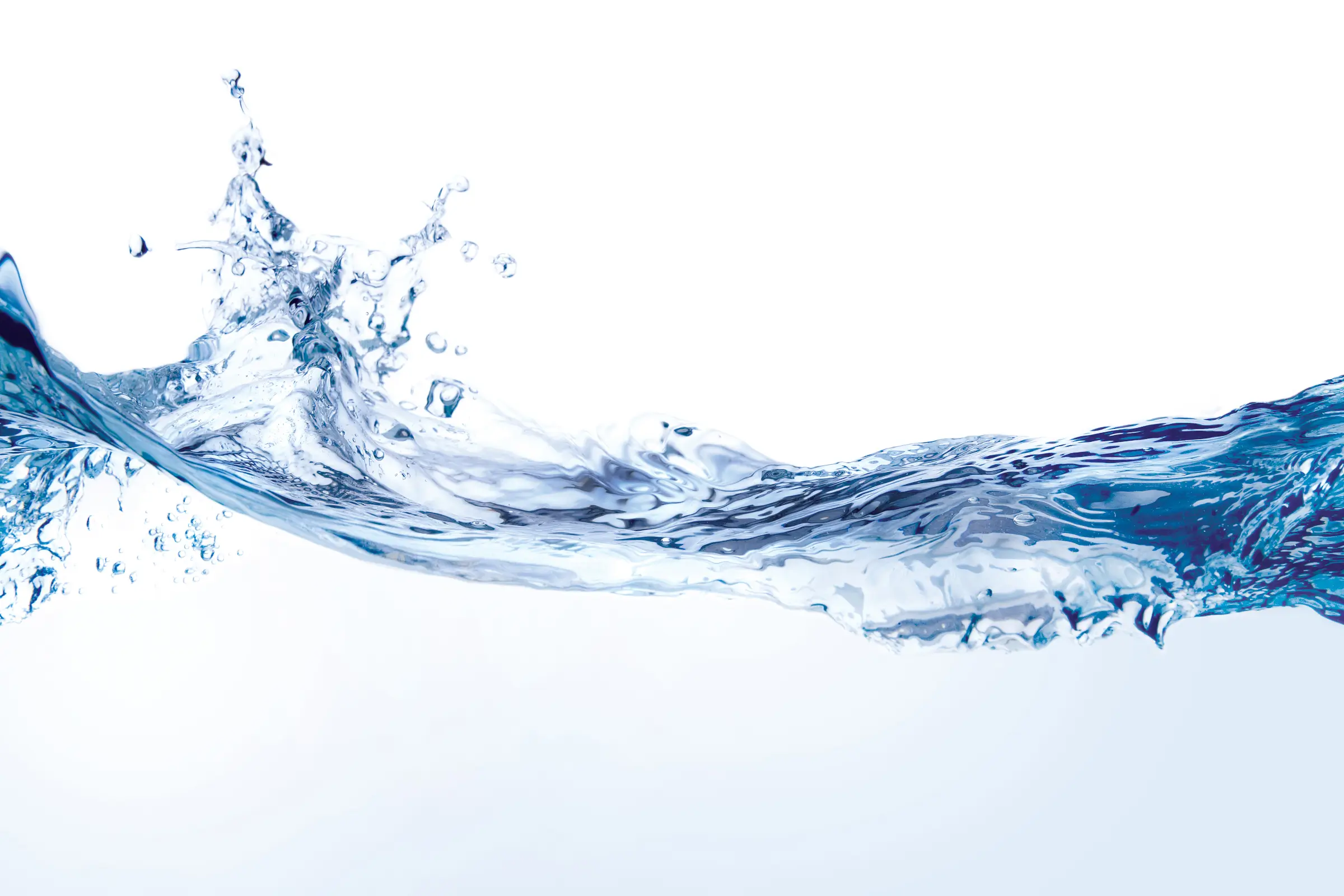Nepal Earthquake | Life on the Ground
 Craig Williams, Water Missions' Logistics Director, has been on the ground in Nepal since Sunday. Late last night we received communication from him with an extended update on how the relief efforts are going. His story provides insight into what the life of a relief worker in the midst of disaster looks like.
After two full days on the ground our operations are now falling into place. Our partnerships are emerging and we have a sense of direction for where we will be responding.
Tonight I was joined by Tim, and tomorrow Tosa will arrive. It is great to have a teammate on the ground now. On Saturday, we will start to do assessments where we will look at hospitals and possibly even a prison inside of Kathmandu that has earthquake damage and around 5000 inmates trapped with no safe water. Then Sunday, we will head out to Gorkha and Dhading about a 7hr drive west of Kathmandu. We will do water assessments, engage local government, and start to identify communities that want to help.
Craig Williams, Water Missions' Logistics Director, has been on the ground in Nepal since Sunday. Late last night we received communication from him with an extended update on how the relief efforts are going. His story provides insight into what the life of a relief worker in the midst of disaster looks like.
After two full days on the ground our operations are now falling into place. Our partnerships are emerging and we have a sense of direction for where we will be responding.
Tonight I was joined by Tim, and tomorrow Tosa will arrive. It is great to have a teammate on the ground now. On Saturday, we will start to do assessments where we will look at hospitals and possibly even a prison inside of Kathmandu that has earthquake damage and around 5000 inmates trapped with no safe water. Then Sunday, we will head out to Gorkha and Dhading about a 7hr drive west of Kathmandu. We will do water assessments, engage local government, and start to identify communities that want to help.
Life here at the moment is a 20hr work day. It ranges from official meetings with WASH clusters, local partners and introductions to government officials to the informal discussions that happen at opportune moments whist waiting for a taxi or standing in the queue at the buffet table. Everything is about gearing up and partnering up, anticipating what might go wrong, filling in the gaps, and making contingency in case plan A does not work as expected.
Response life here is trying, because beyond the long work day we are still feeling tremors here in the city. Some are very mild and some I must be honest make me think twice about whether I should be here. But the need is huge, and we have to do what needs to be done. So I find myself analyzing every building I step into, looking for damage and searching for stronger and safer corners to move to if a big tremor comes. In my hotel room, I have my bag ready to go with water in it, my flashlight by my side, and a plan for where I will shelter. 4 paces to be under the reinforced concrete beam at my bedroom door, 15 paces to be within the reinforced concrete structure of the stairwell. So far in the 4 hrs of not working, 3 hrs sleep is about normal. This last paragraph was written at 3 am sitting on the stairwell. But tonight, I will still get to sleep at some point in a warm and dry bed, and I can’t help think of the tens of thousands of people out in the city tonight who have the same clothes since Saturday and are under a plastic sheet or tucked between some trash cans to shelter form the rain and the evening cold. Maybe soon I will move my team into tents and avoid any potential accidents… Let's see what comes!
A few pictures of what I am seeing around me:
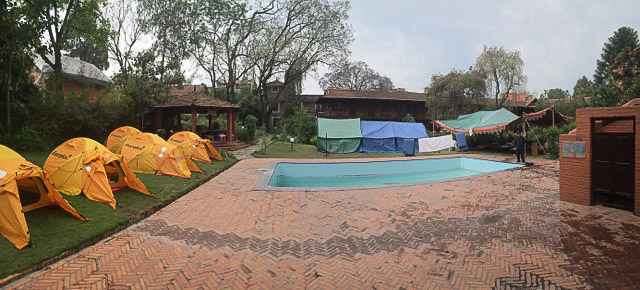
The Summit Hotel: There are now more people estimated to be living outside than guests registered inside the rooms. Each hotel room has 2-3 people living in it. The hotel staff is gracious and treat everyone as guests. Notice the empty pool. The hotel has run out of water and is using the pool water for showers and toilets. Water situation is so bad that they don’t serve drinks in glasses as they not trust the quality of the water to wash them with.
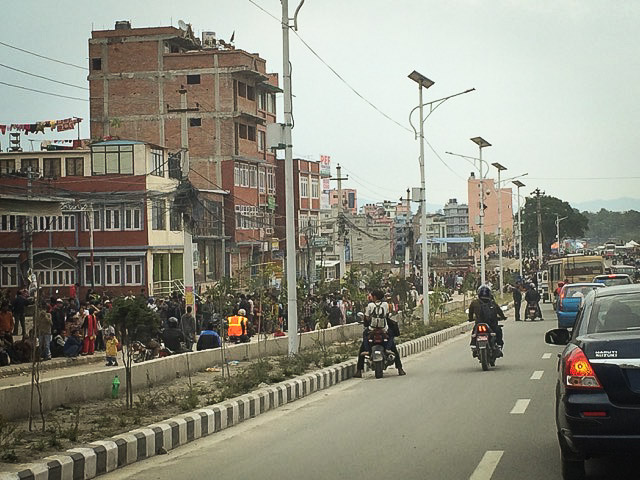
This queue we came across we estimated to be around 1.2km long. Our driver explained that it was people leaving Kathmandu to go to the their families in the districts. But for the most part, this city is very functional. Many shops are closed though, because people have left the city or are unable to open the shops or too afraid to go back indoors. People are on edge, and the nervousness is evident.
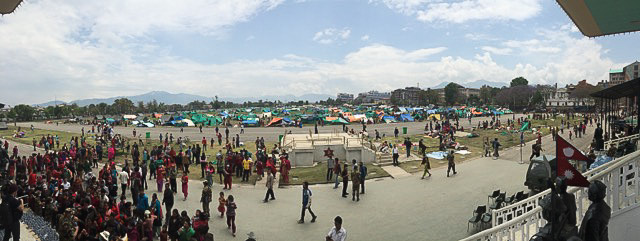
This camp in the middle of the city (I think its in Tundikhel Square) was host to an estimated 15,000 people within 24 hrs after the quake. Four days later, it is now about 3,500 people. The military are running the camps with local partners trucking in water and digging latrines. The queue to the left are people waiting to see the doctors. The table to the left with the military uniforms is camp registration and water bottle handout.
 This residence is typical of the damaged houses you see around the city. To stand outside is eery because you can see in and see the life that was: the chair against the wall that is no more, the table and drawers on the left and looking at the rubble on the right you see the devastation of furniture and masonry all piled together. This house has collapsed into the side walk and spread into the street, taking the spaghetti of overhead cables with it. The clean up efforts have scraped the street clear and piled the remaining back onto the sidewalk just before we came through.
This residence is typical of the damaged houses you see around the city. To stand outside is eery because you can see in and see the life that was: the chair against the wall that is no more, the table and drawers on the left and looking at the rubble on the right you see the devastation of furniture and masonry all piled together. This house has collapsed into the side walk and spread into the street, taking the spaghetti of overhead cables with it. The clean up efforts have scraped the street clear and piled the remaining back onto the sidewalk just before we came through.
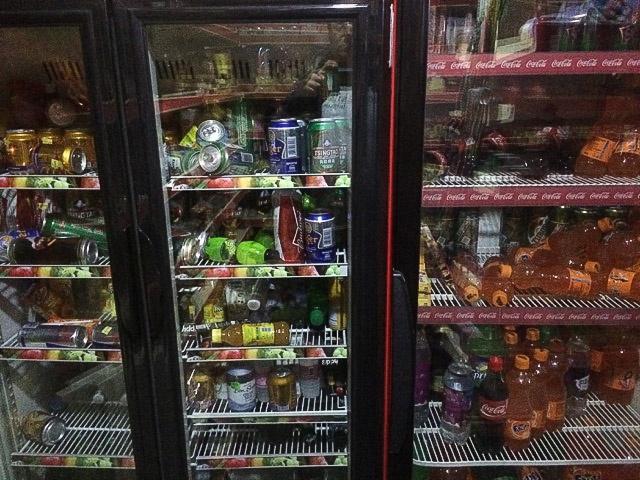
This shop I went into had just reopened 5 days after the quake. Although they had got to the shelves and tidied most of the store, the fridge had not yet been attended to. How sad I am taking pictures of fridges and actually sharing them!

This is the logistics cluster meeting at the relief goods staging area. The container on the right is where we all squashed in. This staging area is on the southern end of the runway and is the clearance and handling area for all relief goods. This was setup to assist the airport achieve better flow as regular customs was not equipped to deal with the volume of aid coming in.
People are too scared to go back indoors or have lost their homes and all their possessions, so they move outside. Today I saw an old lady digging through the rubble to find some pots and pans. I have seen families sleeping in the doorway of their home so they could run out quickly. I have seen a mother and her two children sleeping between to cars in a carport because the house was damaged and she was afraid to go back in. But at night her husband sleeps outside to make sure no one will come and steal their things. These are not the poorest of the poor but regular families that have jobs and now find themselves without alternatives.
Timecheck: 3:30AM - Day 2 complete.
Unfortunately the last tremor killed the internet. Sorry, you will have to wait till I get online again to get this.
- Craig Williams, Logistics/Relationships Director for Water Missions International, currently leading efforts in Nepal.
To receive real-time updates follow us on Facebook and Twitter.Related Impact Stories
